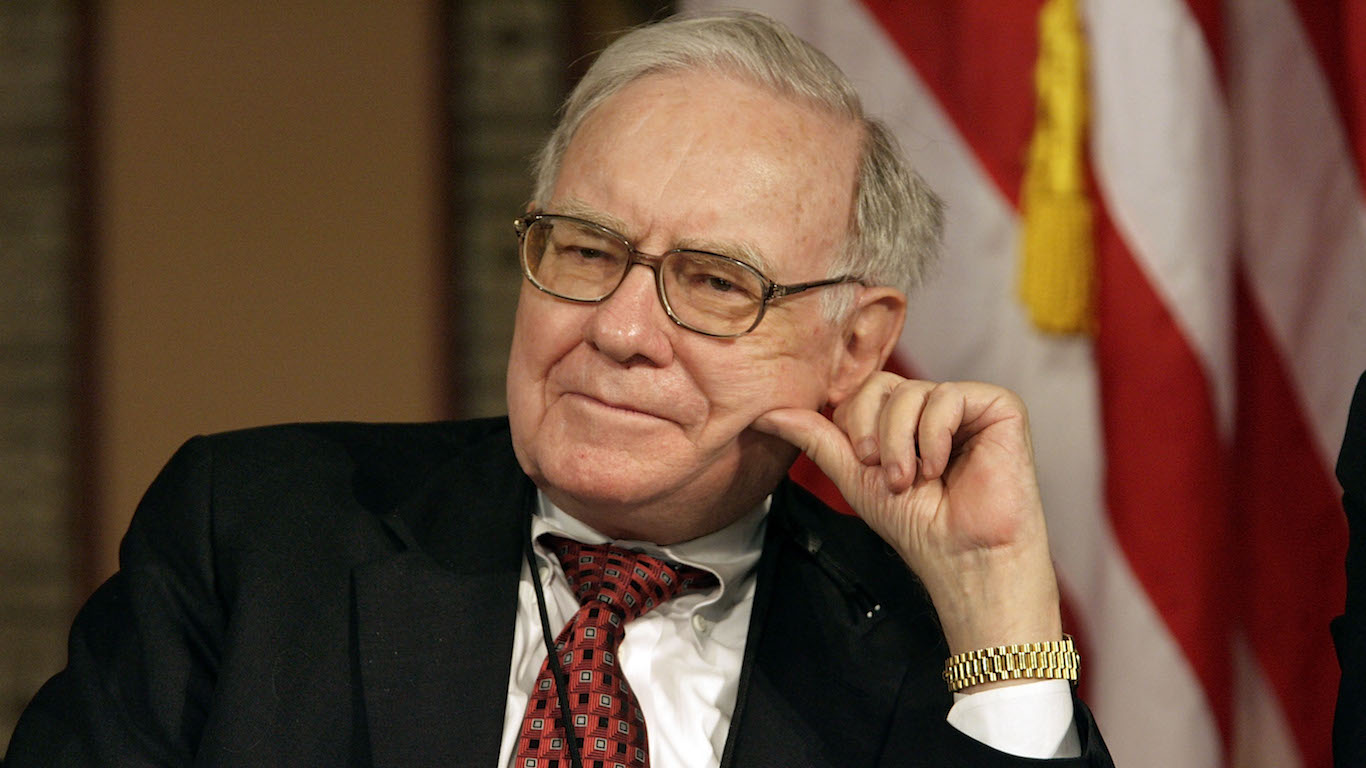Banking, finance, and taxes
How Buffett and Berkshire Hathaway Complicate Top Financial ETFs

Published:
Last Updated:

At the start of every earnings season, the investing community gets to see how the strength of the banking industry has been since the prior reports. This is where the banking and financial stocks thrive or flop, and that means they get to help influence the stock market as a whole — and they get to dominate the financial services sector indexes and exchange-traded funds (ETFs).
[in-text-ad]
The Financial Select Sector SPDR Fund (NYSEARCA: XLF) is supposed to be the go-to ETF for the financial services sector. With JPMorgan earnings followed by Wells Fargo, Bank of America, Citigroup and Goldman Sachs, this can trade actively around the start of each earnings season. This ETF offers exposure in diversified financial services via ownership of shares in insurance, banks, capital markets, consumer finance, mortgage real estate investment trusts and other mortgage finance companies. There is just one problem here, and that is that the largest component, with a whopping 13% weighting, is Berkshire Hathaway Inc. (NYSE: BRK-A).
Why having Berkshire Hathaway as the top stock in an index matters so much is that the underlying shares of Berkshire Hathaway are often perceived as not being that big of movers in the market, and Berkshire Hathaway is frequently valued as a conglomerate rather than as a financial stock. Some investors can easily argue that Buffett’s insurance operations are equally matched with the industrial companies and utilities owned under the Berkshire Hathaway umbrella, along with what was close to a $200 billion portfolio of public stocks.
With only a 0.13% annual gross expense ratio, and more than $24.5 billion in total net assets as of April 15, it is of little surprise that the Financial Select Sector SPDR ETF can trade 50 million shares or more on any given trading day. Investors are also quite comfortable with the fund because it dates back to 1998. That said, there are many ETFs with bank and finance exposure that are less influenced by Berkshire Hathaway.
The Financial Select Sector SPDR ETF has about 56% of its entire weighting tied up in the top 10 holdings of the index. The ETF’s entire weight is in 67 holdings on the SPDR site, but the top 10 holdings showed the following percentage weightings each:
There are other alternatives for investors who want ETF exposure to the financial sector. A look at alternatives on the ETFDB.com site shows there may be some better non-Buffett or less-Buffett ETFs.
The Vanguard Financials Index Fund ETF Shares (NYSEARCA: VFH) still has Berkshire Hathaway shares with a 7.15% weighting, but JPMorgan is higher at a 9.25%, and Bank of America is right on Buffett’s heels with a 7.07% weighting. The ETFDB site shows it to be the largest competitor by market cap at $7.32 billion in assets under management and with a slightly lower 0.10% expense ratio.
The SPDR S&P Bank ETF (NYSEARCA: KBE) appears to be more bank dominated than the broader XLF ETF, and the SPDR S&P Regional Banking ETF (NYSEARCA: KRE) is made up of regional banks and has no ownership of the money-center banks or any insurance giants, and no Berkshire Hathaway.
One other ETF alternative for banks without insurance and with Berkshire Hathaway in the holdings is the Invesco KBW Bank ETF (NASDAQ: KBWB), with almost $600 million in assets but with a higher expense ratio of 0.35%. This ETF has 7% to 8% weightings in JPMorgan, Citigroup, Bank of America, U.S. Bancorp and Wells Fargo.
There is also the Invesco KBW Regional Banking ETF (NASDAQ: KBWR), which owns only the regional banks, so no money-center banks dominating the ETF and no insurance nor Berkshire Hathaway. The ETFDB shows it also with a 0.35% expense ratio, but only about $82 million in assets under management. This ETF has 51 holdings, and none have even a 5% weighting in the entire ETF, with these the top five: Signature Bank (3.94%), East West Bancorp (3.91%), Commerce Bancshares (3.61%), Cullen/Frost Bankers (3.54%) and Synovus Financial (3.11%).
Financial ETFs are actually lucky that there are some market cap-weighting limits or that the ETFs govern certain maxim percentages for Berkshire Hathaway as well. Its $518 billion market cap is far larger than the $360 billion of JPMorgan and the $282 billion for Bank of America, so the dominance could be even worse if the raw market capitalization was all that matters. Wells Fargo’s fall from grace has taken its market cap down to $213 billion, and Citigroup still lags with a $160 billion market cap.
When it comes to ETFs, some investors may hope that they can avoid the sometimes painful “know exactly what you own” rule of investing. Unfortunately, not all ETFs are created equal — and some financial ETFs may have too much exposure to Buffett and Berkshire Hathaway when it comes to trading and investing. If investors want to own that much of Berkshire Hathaway, maybe they should just own its shares.
Thank you for reading! Have some feedback for us?
Contact the 24/7 Wall St. editorial team.